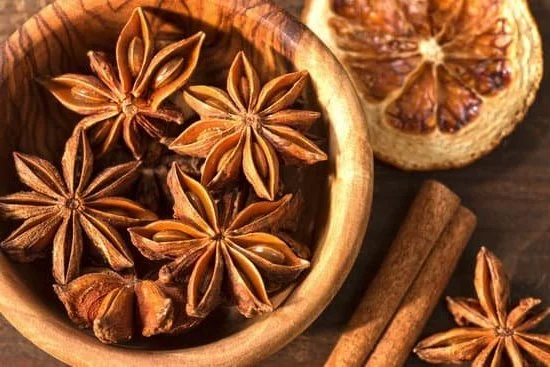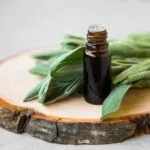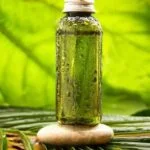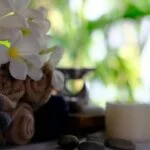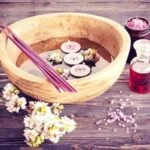Aromatherapy is the practice of using essential oils to promote overall well-being, relaxation, and stress relief. In this article, we will explore different methods of enjoying aromatherapy without a diffuser. From inhalation techniques to topical application and even DIY room sprays, there are numerous ways to experience the benefits of essential oils without the need for a traditional diffuser.
Aromatherapy has been used for centuries as a natural way to enhance both physical and emotional health. The therapeutic properties of essential oils like lavender, peppermint, and eucalyptus have been found to have positive effects on mood, energy levels, and respiratory health. Whether you’re new to aromatherapy or looking for alternative methods to enjoy it without a diffuser, this article will provide you with various options for incorporating essential oils into your daily routine.
By understanding the basics of aromatherapy and its potential benefits for relaxation and well-being, individuals can explore alternative ways of experiencing its effects without relying on a traditional diffuser. From steam inhalation and topical application to room sprays and even aromatherapy baths, there are plenty of creative options for enjoying the therapeutic properties of essential oils in your daily life.
Essential Oils and Their Properties
When it comes to aromatherapy, essential oils play a crucial role in providing various therapeutic benefits. Each essential oil has its own unique properties that contribute to its effectiveness in promoting relaxation, stress relief, and overall well-being.
Lavender, for example, is well-known for its calming and soothing properties, making it an ideal choice for relaxation. Peppermint, on the other hand, is often used for its energizing and invigorating effects, while eucalyptus is popular for its ability to relieve congestion and support respiratory health.
But what if you don’t have a diffuser to enjoy the benefits of these essential oils? There are several alternative methods for using essential oils without a diffuser. Direct inhalation involves simply breathing in the aroma of the essential oil from the bottle or a few drops on a tissue or cloth.
This method allows you to experience the aroma of the oil without needing a diffuser. Additionally, palm inhalation involves adding a drop of essential oil to your palms, rubbing them together, and cupping your hands over your nose and mouth to inhale deeply.
Using essential oils topically is another way to benefit from their therapeutic properties without a diffuser. However, it’s important to dilute essential oils in a carrier oil before applying them to the skin to ensure safety and reduce the risk of irritation.
You can also incorporate essential oils into homemade massage oils by blending them with carrier oils such as sweet almond or coconut oil. By applying these diluted mixtures directly onto the skin through massage or gentle patting motions, you can experience the aromatic and topical benefits of essential oils without relying on a diffuser.
In summary, there are many ways to enjoy aromatherapy without a diffuser by using alternative methods such as direct inhalation and topical application. Understanding the properties of different essential oils and how they can be safely used outside of a diffuser can expand your options for incorporating aromatherapy into your daily routine.
Whether you choose to inhale the aroma directly from the bottle or use diluted blends on your skin, experimenting with various techniques can help you find what works best for you in harnessing the benefits of aromatherapy.
Inhalation Techniques
Aromatherapy enthusiasts often turn to inhalation techniques as a way to enjoy the therapeutic benefits of essential oils without the need for a diffuser. In this section, we will explore different methods of inhaling essential oils and how to do aromatherapy without a diffuser. Whether you’re looking for relaxation, an energy boost, or relief from congestion, these inhalation techniques can cater to your specific needs.
Direct Inhalation
One of the simplest ways to benefit from essential oils is through direct inhalation. This method involves placing a few drops of your chosen essential oil onto a tissue or cotton ball and inhaling the aroma directly. You can also place a drop or two on your palms, rub them together, and cup them over your nose and mouth while taking deep breaths. Direct inhalation allows for quick and easy access to the aromatic properties of essential oils.
Palm Inhalation
Another convenient method is palm inhalation, which involves adding a few drops of essential oil onto the palms of your hands and then rubbing them together. Cupping your hands over your nose and mouth, take deep breaths in through your nose and out through your mouth. This approach allows you to inhale the aroma directly from your palms and experience the immediate effects of the essential oil.
Using a Cloth or Tissue
For those who prefer a more subtle approach, using a cloth or tissue to diffuse essential oils can be effective as well. Simply add a few drops of an essential oil onto a clean cloth or tissue and place it within close proximity so that you can breathe in the aromatic scent gradually. This method provides a gentle and long-lasting diffusion of the essential oil’s fragrance, allowing for continuous enjoyment throughout the day.
Incorporating these inhalation techniques into your daily routine can make aromatherapy accessible without needing to rely on a diffuser. Whether at home, work, or on-the-go, you can experience the benefits of essential oils through simple inhalation methods tailored to suit your individual preferences.
Steam Inhalation
Using steam inhalation is a simple and effective way to practice aromatherapy without a diffuser. This method allows the essential oils to be inhaled directly, providing respiratory and relaxation benefits. Here’s how to do aromatherapy without a diffuser using steam inhalation.
Process
To benefit from steam inhalation, fill a bowl with hot water – not boiling, as this can degrade the therapeutic properties of the essential oils. Add a few drops of your chosen essential oil(s) to the water. Lean over the bowl with a towel draped over your head to create a tent, trapping the steam inside. Close your eyes, breathe deeply and slowly, and inhale the aromatic steam for about 5-10 minutes.
Benefits
Steam inhalation can provide relief for respiratory conditions such as congestion, sinusitis, or allergies. The heat and moisture from the steam help to open up nasal passages and airways, while the essential oils contribute their therapeutic properties for additional support.
Safety Precautions
It’s important to use caution when practicing steam inhalation with essential oils. Always dilute essential oils before adding them to hot water to prevent skin irritation or sensitivity. Be mindful of the type and amount of essential oils used, especially if you have any existing health conditions or are pregnant. Additionally, make sure not to place your face too close to the hot water to avoid burns or discomfort.
By following these steps for steam inhalation, individuals can enjoy the benefits of aromatherapy without investing in a diffuser while also being mindful of safety when using essential oils in this manner.
Topical Application
While using a diffuser is a popular way to enjoy the benefits of aromatherapy, it is not the only method available. In fact, you can easily experience the therapeutic effects of essential oils through topical application. This section will provide instructions on how to safely apply essential oils topically and the importance of dilution for safe usage on the skin.
It is essential to dilute essential oils before applying them directly to the skin to avoid irritation or sensitization. One common method is to mix a few drops of your chosen essential oil with a carrier oil such as coconut oil, almond oil, or jojoba oil. For general use, a 2% dilution (12 drops of essential oil per ounce of carrier oil) is often recommended, but this can be adjusted based on individual preferences and sensitivities.
Another way to enjoy the benefits of topical application without a diffuser is by creating your own homemade massage oils. By combining diluted essential oils with a carrier oil and storing them in an amber glass bottle, you can easily apply the blend during self-massage or ask someone else for a massage session that promotes relaxation and overall well-being.
For those who prefer not to use carrier oils, another option for enjoying aromatherapy without a diffuser is to create your own scented body or face creams. By adding a few drops of your preferred essential oil into an unscented lotion or cream base, you can personalize your skincare routine while reaping the benefits of aromatherapy.
| Topical Application Method | Safety Precautions |
|---|---|
| Dilution with Carrier Oil | Avoid applying undiluted essential oils directly onto the skin. |
| Homemade Massage Oils | Perform a patch test before using any new blend to check for potential skin sensitivity. |
| Scented Body / Face Creams | Make sure that you are using unscented lotions or cream base without harsh chemicals. |
Aromatherapy Jewelry and Accessories
One popular option is a diffuser necklace, which typically features a small pendant that opens to reveal a felt pad or other absorbent material where essential oils can be applied. Wearers can simply add a few drops of their preferred essential oil or oil blend onto the pad, close the pendant, and enjoy the aroma as they go about their day. This discreet method allows for personal aromatherapy without disturbing others nearby.
In addition to jewelry, there are also accessories such as car vent clips and USB diffusers that make it easy to experience aromatherapy on-the-go. These compact items can be used in vehicles, at work, or while traveling to create a calming atmosphere wherever you are. With these options, anyone can integrate aromatherapy into their daily routine without relying on a traditional diffuser.
| Aromatherapy Jewelry and Accessories | Benefits |
|---|---|
| Diffuser jewelry | Convenient and portable way to enjoy aromatherapy throughout the day |
| Car vent clips and USB diffusers | Create a calming atmosphere on-the-go |
Room Sprays and Linen Sprays
Aromatherapy is a practice that involves using natural plant extracts, known as essential oils, to promote overall well-being. These oils can be used in a variety of ways to create a calming and relaxing atmosphere, and one does not necessarily need to have a diffuser to enjoy the benefits of aromatherapy. Here are some ways you can do aromatherapy without a diffuser:
- Make your own room spray: Mix water with 10-20 drops of your favorite essential oil in a spray bottle. Shake well before each use and spritz around the room for an instant burst of aroma.
- Create linen sprays: Add 10-15 drops of essential oil to a small amount of water in a spray bottle. Use this to freshen up pillows, bedding, and curtains for a soothing and calming effect.
- Place cotton balls with essential oil: Put a few drops of essential oil on a cotton ball and place it near your bedside or inside drawers to infuse the air with pleasant scents.
These methods allow you to experience the benefits of aromatherapy without needing to invest in a diffuser. By utilizing these simple techniques, you can easily integrate the power of essential oils into your daily routine for relaxation and stress relief. Remember that essential oils are highly concentrated, so always dilute them properly when using them directly on skin or fabric, and avoid direct contact with eyes or mucous membranes.
Experimenting with different aromatic scents can also add variety and personalized relaxation options within your living space. Whether you choose to create DIY room sprays, linen sprays or use cotton balls with essential oil, there are several choices available on how to do aromatherapy without a diffuser that best suits each individual’s needs for using essential oils in their everyday lives.
Aromatherapy Bath
A relaxing bath infused with essential oils can be a luxurious and therapeutic experience. If you don’t have a diffuser, creating an aromatherapy bath is a wonderful alternative to enjoy the benefits of essential oils for relaxation and stress relief. Here are some simple ways to incorporate aromatherapy into your bath without the need for a diffuser:
1. Droplets of Essential Oils: Add a few drops of your favorite essential oil directly to your bathwater. Create a soothing atmosphere with lavender for relaxation, or invigorate your senses with eucalyptus or peppermint for an energizing effect.
2. DIY Bath Salts: Mix Epsom salts with a few drops of essential oils in a bowl before adding them to your bathwater. This not only infuses the water with your chosen scent but also provides additional benefits such as muscle relaxation and detoxification.
3. Aromatherapy Shower Steamers: If you prefer taking showers over baths, consider using aromatherapy shower steamers. These are small disks made with baking soda, citric acid, and essential oils that release aromatic steam when placed at the bottom of your shower.
By incorporating these methods into your bathing routine, you can experience the soothing effects of aromatherapy without the use of a diffuser.
As always, it’s important to prioritize safety and proper usage of essential oils when enjoying an aromatherapy bath. Be sure to dilute essential oils in a carrier oil or other medium before applying them directly to your skin, and consult with a healthcare professional if you have any concerns about using essential oils.
Conclusion
In conclusion, the benefits of aromatherapy are vast, and there are numerous ways to enjoy its effects even without a diffuser. From inhalation techniques to topical application and the use of room sprays, linen sprays, and aromatherapy accessories, there are plenty of options for incorporating essential oils into your daily routines for relaxation, stress relief, and overall well-being. These methods allow you to experience the therapeutic properties of essential oils without the need for a traditional diffuser.
It’s important to remember that safety should always be a top priority when using essential oils. Whether you choose to inhale them, apply them topically, or use them in a DIY spray or bath recipe, it’s crucial to properly dilute the oils and follow recommended guidelines for usage. With proper care and attention, you can enjoy the benefits of aromatherapy in various ways while ensuring a safe and pleasant experience.
Ultimately, finding what works best for you may involve some trial and error. Different individuals may respond differently to various aromatherapy methods and essential oil combinations. The key is to experiment with different techniques and scents to discover what brings you the most relaxation and comfort. By exploring these various approaches to enjoying aromatherapy without a diffuser, you can personalize your experience and create moments of tranquility throughout your day.
Frequently Asked Questions
How Can I Do Aromatherapy at Home Without a Diffuser?
Aromatherapy can be done at home without a diffuser by using alternative methods such as oil burners, reed diffusers, or simply inhaling the scent directly from the bottle or on a cotton ball.
Can You Diffuse Essential Oils Without a Diffuser?
Yes, it is possible to diffuse essential oils without a diffuser. Some alternatives include using a tissue or cloth, creating a room spray, or adding essential oils to boiling water and letting the steam disperse the scent.
What Can I Use Instead of Diffuser Oil?
Instead of diffuser oil, one can use carrier oils such as coconut or jojoba oil as a base for diluting essential oils. Water-based alternatives like witch hazel or alcohol can also be used to create room sprays or linen mists.

Are you looking for a natural way to improve your health and wellbeing?
If so, aromatherapy may be the answer for you.

